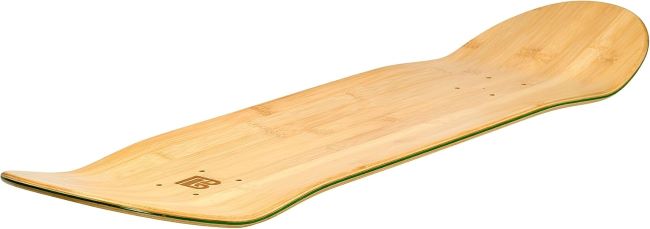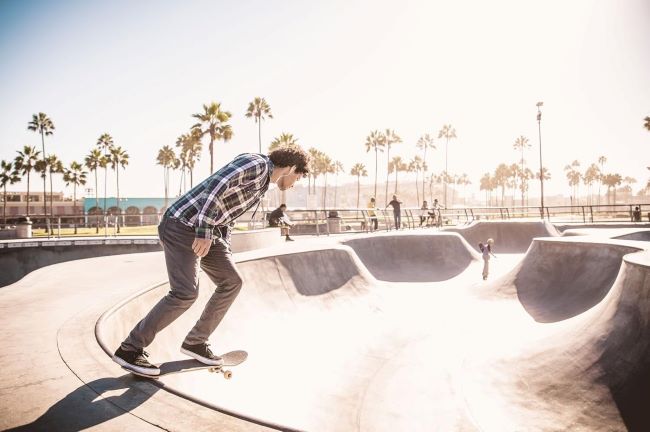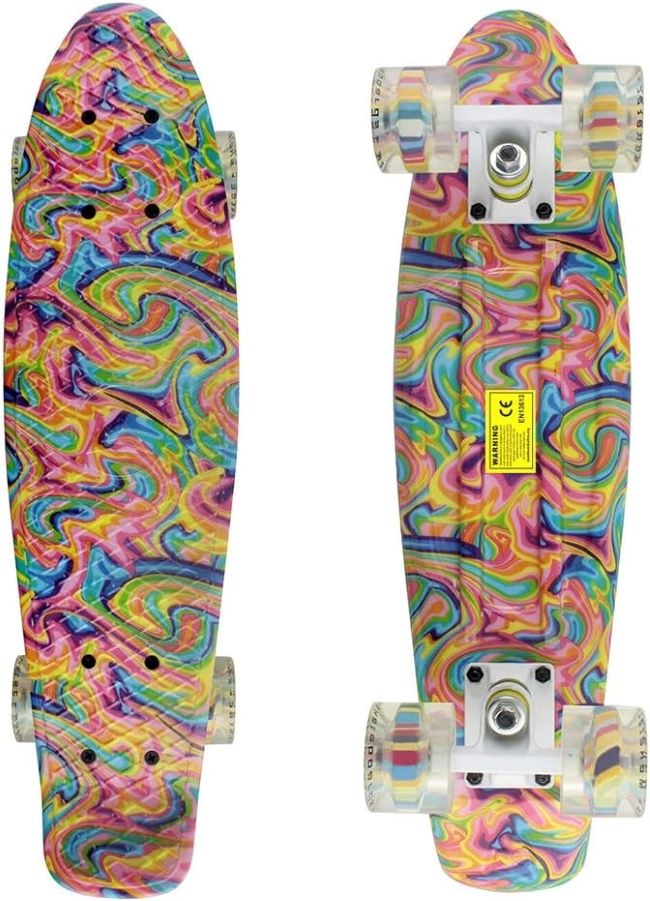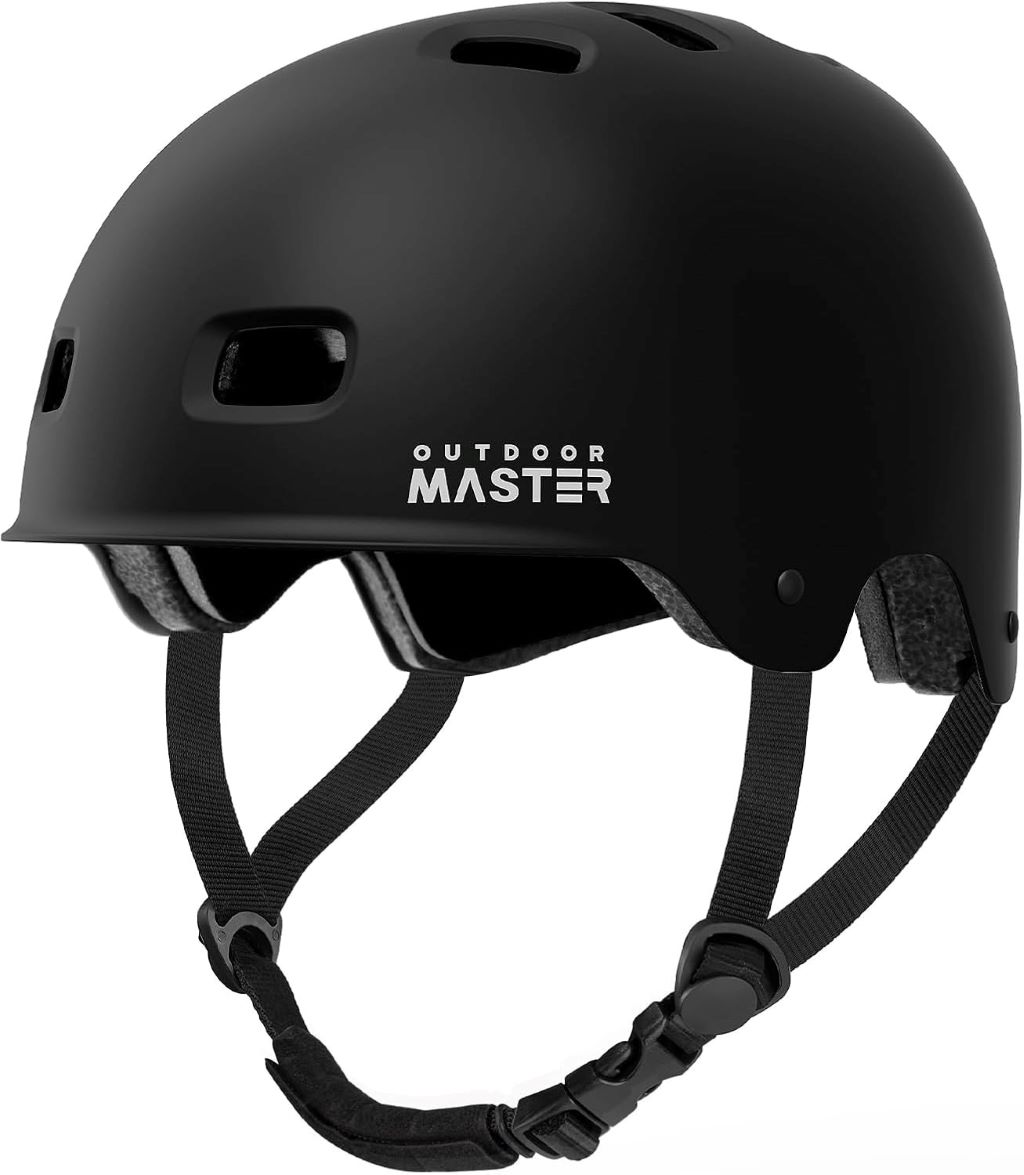The skateboarding world has witnessed a quiet revolution over the past decade. Bamboo skateboard decks have emerged from obscurity to challenge the maple wood dominance that has lasted nearly fifty years. Traditional maple decks remain popular, yet bamboo alternatives are gaining serious traction among riders who demand more from their equipment.
Most skaters stick with what they know. Maple has been the industry standard since the 1970s, and changing materials feels risky. However, bamboo brings unique properties that could transform your skating experience. The material offers impressive flex characteristics combined with exceptional durability that maple simply cannot match. Studies from materials science journals show bamboo has a tensile strength superior to steel when measured pound for pound. This translates directly to better pop and longer deck life.
Product at a Glance
Bamboo skateboard decks represent the next generation of skating technology. These boards typically feature multiple layers of bamboo veneer, often combined with fiberglass or carbon fiber for added strength. The construction process differs significantly from traditional maple decks. Manufacturers press bamboo layers together using epoxy resin, creating a composite that maximizes the natural properties of this remarkable grass. Yes, bamboo is technically a grass, not a wood, which explains its rapid growth rate and sustainability credentials.

Key Features Table
| Feature | Specification |
|---|---|
| Material Composition | 5-9 layers of bamboo veneer with optional fiberglass |
| Weight Range | 20-30% lighter than comparable maple decks |
| Flex Rating | Medium to high, adjustable based on construction |
| Durability Rating | 2-3 times longer lifespan than standard maple |
| Pop Retention | Maintains responsiveness 40% longer |
| Eco-Friendliness | Fully renewable, grows to maturity in 3-5 years |
| Price Range | $60-$150 depending on brand and construction |
| Ideal Rider Weight | Suitable for all weights with proper layup selection |
Understanding Bamboo’s Superior Performance
The secret lies in bamboo’s unique cellular structure. Unlike maple, which has irregular grain patterns, bamboo features uniform fibers running the length of the material. This consistency delivers predictable flex and response across the entire deck surface. Professional skater testimonials frequently mention the springy feel that bamboo provides. The material compresses under pressure and rebounds efficiently, giving you that extra boost on ollies and kickflips.
Temperature resistance presents another advantage. Maple decks become brittle in cold weather and can delaminate in extreme heat. Bamboo maintains structural integrity across a wider temperature range. Riders in hot climates report fewer pressure cracks, while those skating through winter notice consistent pop despite freezing conditions. Environmental factors that destroy maple decks barely affect bamboo alternatives.
Pros & Cons Table
Advantages:
- Exceptional durability extends deck lifespan significantly
- Superior pop retention keeps tricks feeling fresh longer
- Lighter weight reduces fatigue during extended sessions
- Environmentally sustainable and rapidly renewable resource
- Better moisture resistance prevents waterlogging
- Consistent flex pattern across the entire board
- Reduced razor tail development on tail and nose
Disadvantages:
- Higher initial purchase price compared to budget maple
- Limited availability in some regions and skate shops
- Different feel requires adjustment period for maple veterans
- Fewer graphic options due to smaller market presence
- Some riders find excessive flex uncomfortable for technical tricks
- Repair options more limited than traditional decks

Real-World Experience and Performance
Testing bamboo decks across various skating styles reveals interesting patterns. Street skaters appreciate the pop retention most. After three months of daily grinding and stair sets, bamboo decks maintain snap that maple loses within weeks. The tail holds its shape better, reducing the dreaded razor tail effect that shortens deck life. Transition skaters notice the flex characteristics during carving and pumping. The spring-loaded feeling helps generate speed through bowls and halfpipes with less effort.
Heavier riders benefit particularly from bamboo construction. The material supports more weight without losing structural integrity or developing stress fractures. A 200-pound skater might snap a standard maple deck within a month. That same rider could ride a bamboo deck for six months or longer. The mathematics checks out when you consider material properties and real-world stress testing.
Beginners gain advantages too. The forgiving flex absorbs impact better during rough landings. This reduces joint stress and makes learning less punishing on your body. Additionally, the extended lifespan means fewer replacement purchases while you’re developing fundamental skills. Your wallet thanks you while you progress.
Frequently Asked Questions
How long does a bamboo skateboard deck typically last?
Most bamboo decks last between four to eight months of regular use. This compares favorably to maple decks, which typically require replacement every two to three months. Actual lifespan depends on skating style, rider weight, and maintenance practices.
Do bamboo decks feel different from maple when riding?
Yes, bamboo offers noticeably more flex and spring than maple. Most riders adapt within a few sessions. The increased responsiveness becomes an advantage once you adjust your technique to match the material properties.
Are bamboo skateboard decks good for beginners?
Absolutely. The durability and forgiving flex make bamboo excellent for learning. Beginners won’t need frequent replacements, and the material absorbs impacts better during falls and rough landings.
Can you use bamboo decks for street skating?
Definitely. Many professional street skaters now ride bamboo exclusively. The material handles grinds, gaps, and technical tricks without issues. Some argue bamboo performs better for street than transition skating.
Is bamboo more expensive than maple?
Initially, yes. Bamboo decks cost 30-50% more upfront. However, the extended lifespan makes them more economical long-term. You buy fewer decks annually, reducing total spending.
Final Thoughts
Bamboo skateboard decks deliver on their promises. The material science supports the performance claims manufacturers make. Extended durability, superior pop retention, and environmental benefits create a compelling package for modern skaters. Traditional maple still has its place, particularly for riders who prefer stiffer decks or classic aesthetics. However, bamboo represents genuine innovation in an industry often resistant to change. Read More: Mastering Skateboard Deck Anatomy: A Comprehensive Guide
The transition from maple to bamboo requires minimal adjustment. Most riders adapt quickly and appreciate the differences within days. Price concerns disappear when you calculate replacement frequency over a full year. Testing a bamboo deck yourself remains the best way to understand what the material offers your specific skating style.
Ready to experience the bamboo difference? Visit your local skate shop or explore options from leading bamboo deck manufacturers. Your next deck could be the last one you buy this year. Make the switch and discover why top riders are embracing this sustainable, high-performance alternative to traditional maple construction.






